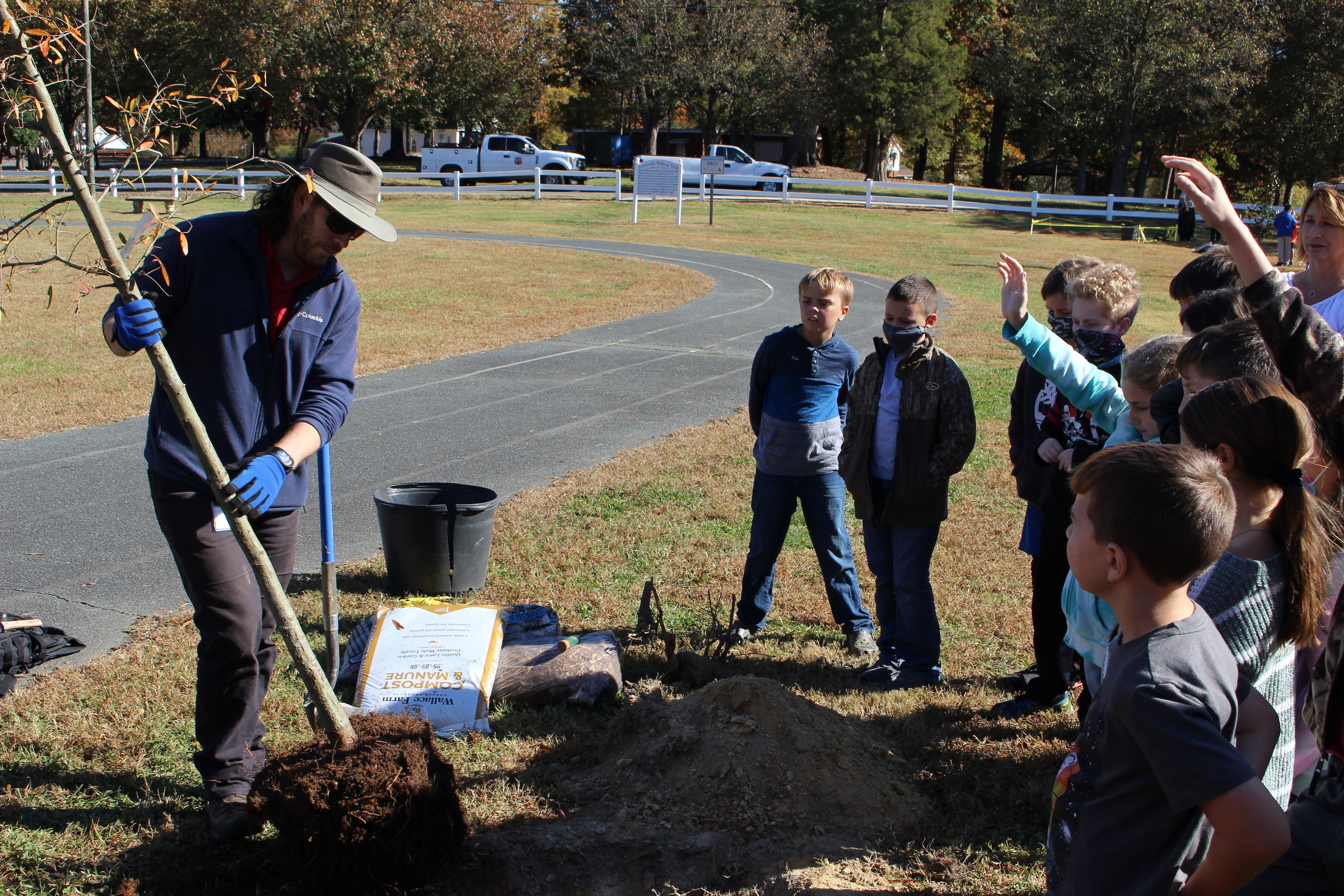Tree Planting Season
go.ncsu.edu/readext?833612
en Español / em Português
El inglés es el idioma de control de esta página. En la medida en que haya algún conflicto entre la traducción al inglés y la traducción, el inglés prevalece.
Al hacer clic en el enlace de traducción se activa un servicio de traducción gratuito para convertir la página al español. Al igual que con cualquier traducción por Internet, la conversión no es sensible al contexto y puede que no traduzca el texto en su significado original. NC State Extension no garantiza la exactitud del texto traducido. Por favor, tenga en cuenta que algunas aplicaciones y/o servicios pueden no funcionar como se espera cuando se traducen.
Português
Inglês é o idioma de controle desta página. Na medida que haja algum conflito entre o texto original em Inglês e a tradução, o Inglês prevalece.
Ao clicar no link de tradução, um serviço gratuito de tradução será ativado para converter a página para o Português. Como em qualquer tradução pela internet, a conversão não é sensivel ao contexto e pode não ocorrer a tradução para o significado orginal. O serviço de Extensão da Carolina do Norte (NC State Extension) não garante a exatidão do texto traduzido. Por favor, observe que algumas funções ou serviços podem não funcionar como esperado após a tradução.
English
English is the controlling language of this page. To the extent there is any conflict between the English text and the translation, English controls.
Clicking on the translation link activates a free translation service to convert the page to Spanish. As with any Internet translation, the conversion is not context-sensitive and may not translate the text to its original meaning. NC State Extension does not guarantee the accuracy of the translated text. Please note that some applications and/or services may not function as expected when translated.
Collapse ▲ With the cool wet weather comes tree planting season. N.C. Cooperative Extension of Union County is partnering with the North Carolina Forest Service and others to celebrate by planting trees at 7 elementary schools here in Union County. During these visits with schools, we talk to 4th graders about the importance of trees in our communities, career options in natural resources, and then get dirty outside planting some trees.
With the cool wet weather comes tree planting season. N.C. Cooperative Extension of Union County is partnering with the North Carolina Forest Service and others to celebrate by planting trees at 7 elementary schools here in Union County. During these visits with schools, we talk to 4th graders about the importance of trees in our communities, career options in natural resources, and then get dirty outside planting some trees.
Although the state’s arbor day is officially in March, that’s the end of the planting season. Right now in the autumn is both the beginning of the tree planting season, and the best time overall to plant trees. Before buying a new tree, take note of your growing conditions. If I had to pick the most important condition for growing trees, I would say soil conditions. We have a lot of heavy clays in this county that benefit from tilling in compost across a large area. Adding some compost to the planting hole is probably not enough to make a difference for a tree – consider tilling large areas to create a planting bed.
Another important thing to consider is whether you have sun or shade. An area that receives full afternoon sun should be planted with full sun trees, such as oaks, deodar cedar, or Wildfire black gum. Wildfire is a type of black gum tree that has been bred for fall color and does really well here in the Piedmont. Areas with afternoon shade might do better with understory trees like dogwood or redbud.
The North Carolina Extension Gardener Plant Toolbox is my favorite website for selecting new species. This interactive online tool allows you to input conditions like shade and wet soil, and gives you a list of trees that suit those conditions. There are currently more than 900 trees on the website. So you can narrow down a list by quite a bit. I recommend selecting the Piedmont as your region because Union County can be too cold for Coastal species and too hot for Mountain species.
The most common mistake when planting trees is planting too deep. To avoid this, find the top of the root system before deciding how deep to dig the planting hole. The top of the root system should be just an inch or two below ground level. Thoroughly water newly planted trees, and mulch extensively. Rip out turf to make room for your new tree, till compost into that soil, plant at the correct depth, and apply mulch a few inches thick.
For more information, please give us a call and we will be more than happy to give you direction on planting your trees this season!




